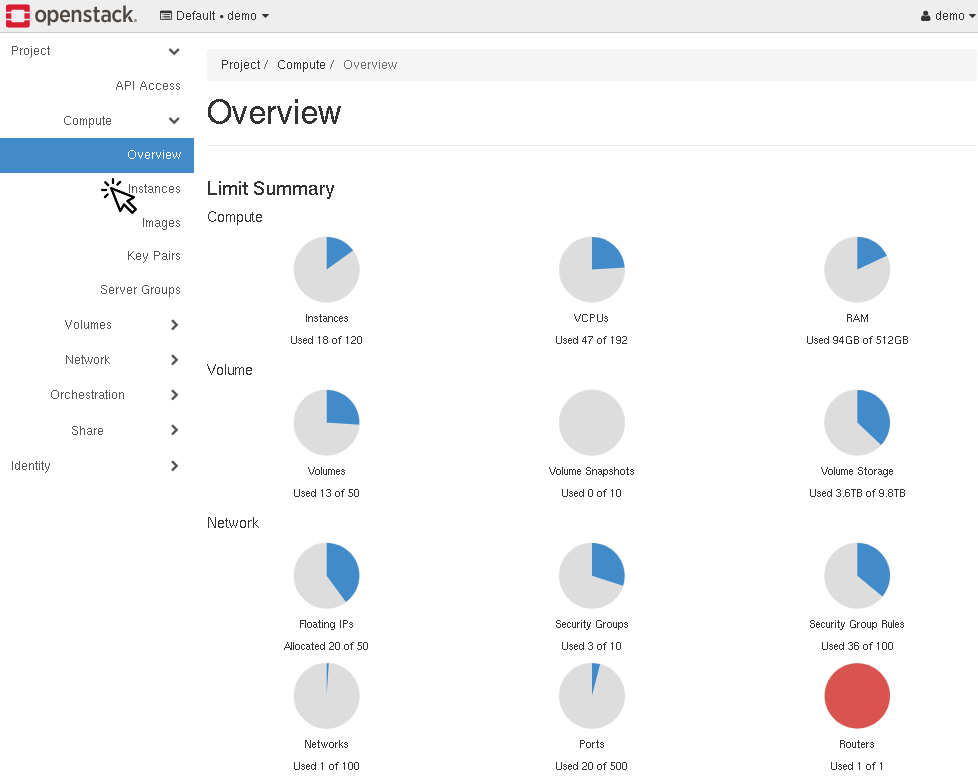
The first concept is understand that instances are not virtual machines. The main difference between the OpenStack model and traditional virtualization technology is the method used to store the running state of the machine.
In traditional virtualization technology the state of the virtual machine is persistent. Openstack can support both models, persistent and ephemeral.
Ephemeral instances
The instance is launched from a image from the Image Service and copied to one compute node where instance starts running. The size must be selected at launch time.
When the instance stop all state is forgotten.
Persistent Instances
The instance is launched from the block storage service and not from the Image Service. When the instance stops the all running states are retained and will be present at next start time.
This model is similar to traditional virtualization.
Ask the cloud operator for the host name or public IP address from which you can access the dashboard, and for your user name and password. If the cloud supports multi-domain model, you also need to ask for your domain name.
Select the appropriate project from the drop down menu at the top left.On the Project tab, open the Compute tab and click "Instances"category.

The dashboard shows the instances with its name, its private and floating IP addresses, size, status, task, power state, and so on. Select "Launch Instance"

Fill the instance name, you can assign a brief description of the virtual machine. The Availability zone is given for the cloud provider. For some cases, it could be nova. To launch multiple instances, enter a value of Count greater than 1. The default is 1.
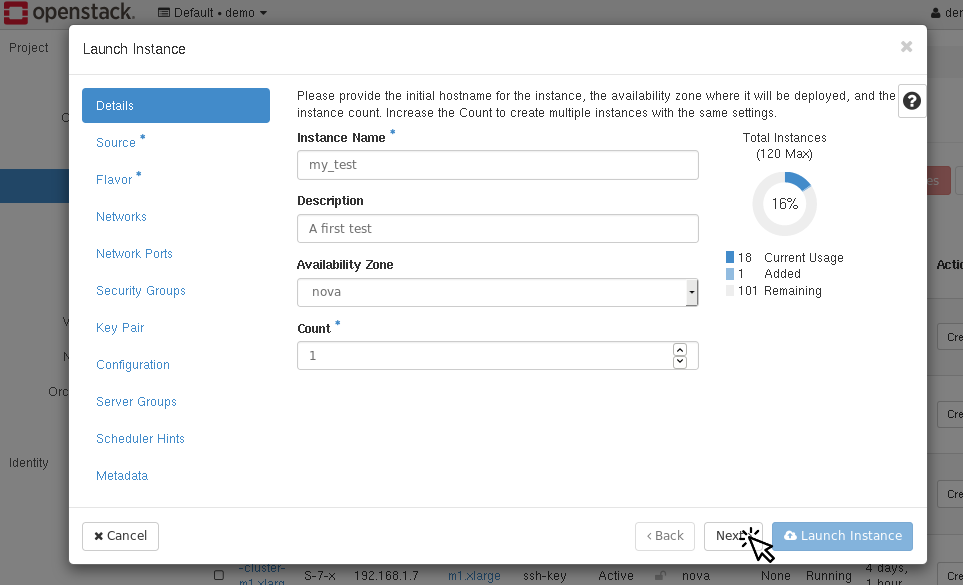
Select an image
Select "image" in the Instance Boot Source and chose "No" in the "Create New Volume" choix. You can select the image from the list.
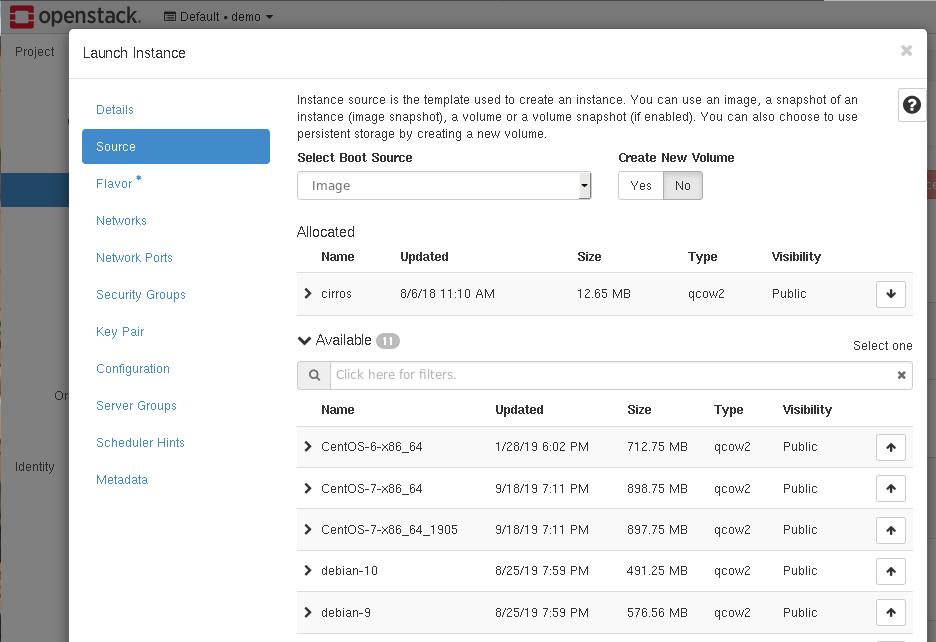
Select flavor
In OpenStack, flavors define the compute, memory, and storage capacity of nova computing instances. To put it simply, a flavor is an available hardware configuration for a server. It defines the size of a virtual server that can be launched.
Choose a Flavour (eg. ... small )
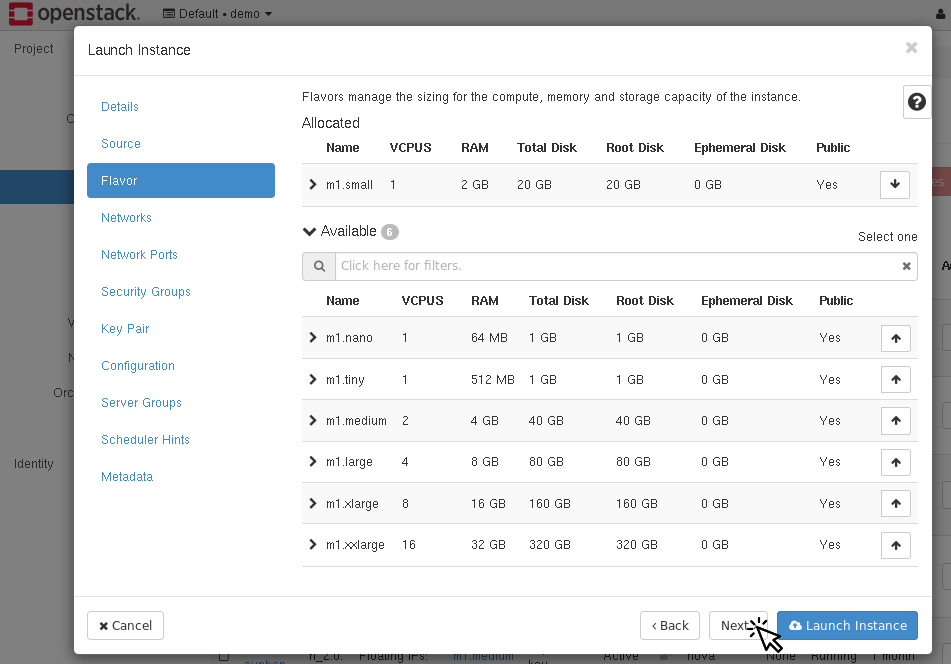
Select Network
Click "Networks" and then choose desired networks ( ex: demo-net )
Security Groups
After that open "Security Groups" After that, choose "default".
Security groups are a kind of cloud firewall that define which incoming network traffic is forwarded to instances.
If you have not created any security groups, you can assign only the default security group to the instance.
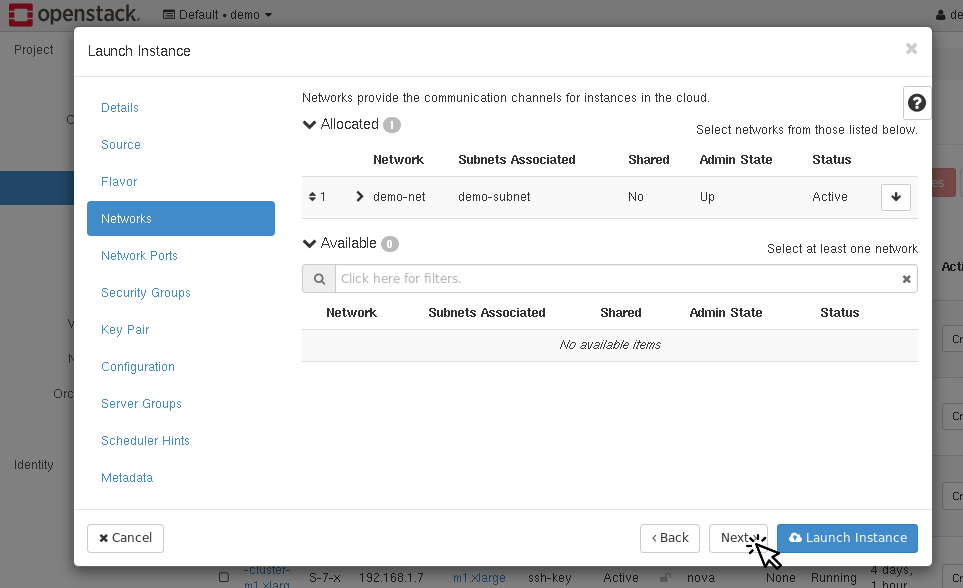
Key Pair
Open "Key Pair" After that, choose a previously created key.

Customization Script Source
Specify a customization script that runs after your instance launches.
Launch Instance.
The instance starts on a compute node in the cloud.
Verify in the Instances form if your instance is "Running".
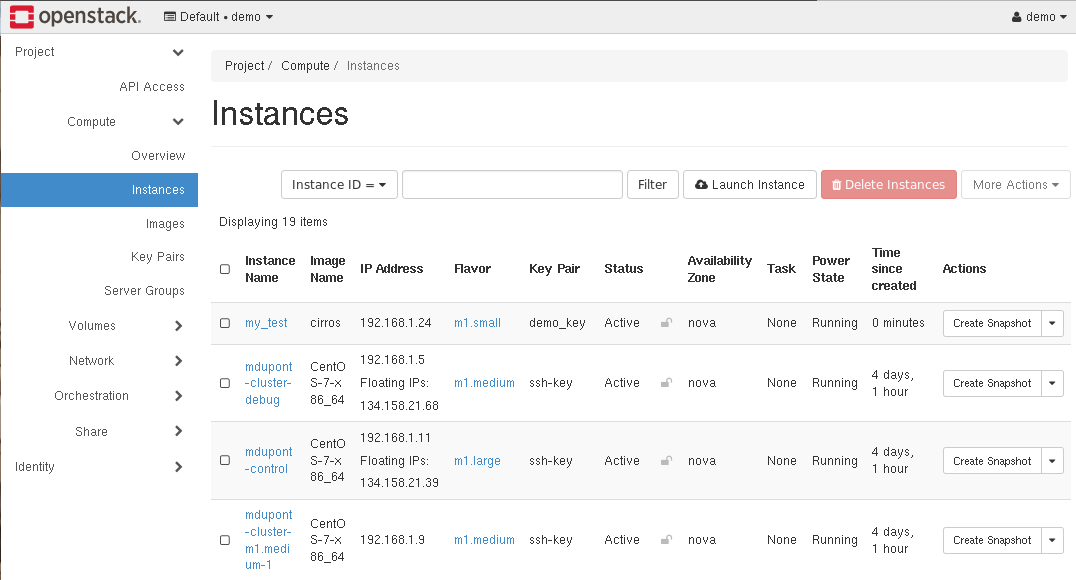
A floating IP address and a private IP address can be used at the same time on a single network-interface.
The private IP address is likely to be used for accessing the instance by other instances in private networks.
the floating IP address would be used for accessing the instance from public networks
In your running instance, chose "Associate Floating IP". After that a list of IP addreses are proposed chose one of them.
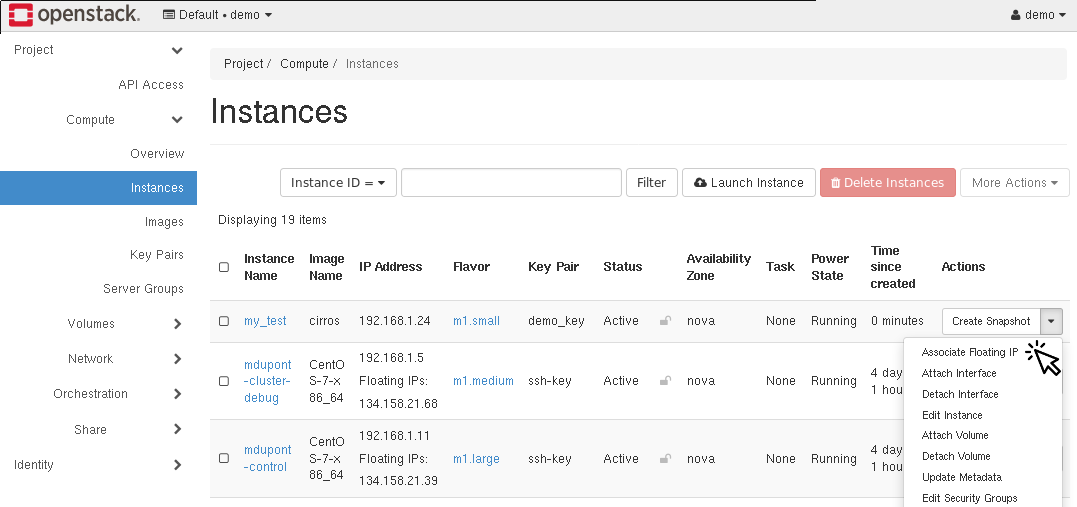
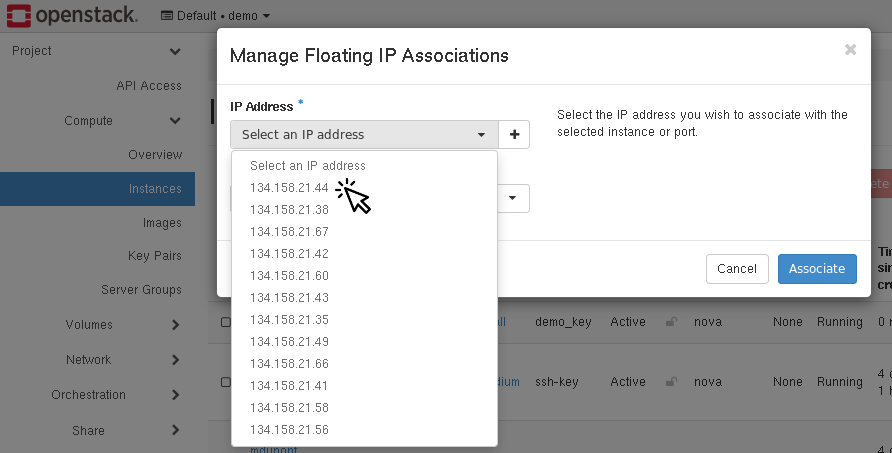
To go farther consult the Openstack latest documentation concerning [ launching instances ](href="https://docs.openstack.org/horizon/latest/user/launch-instances.html)